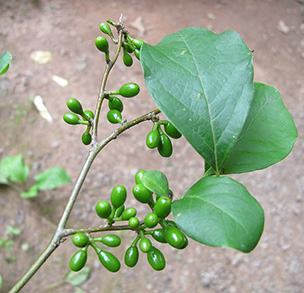Lindera benzoin
The Common Spicebush is a small, deciduous, understory tree or large shrub known for its fragrant flowers and leaves. This species produces a broad, full crown originating from its multi-stemmed trunk. Leaves are bright green, simple and arranged alternately along the branches. Foliage turns a bright yellow colour within the fall season. Leaves of this species emit a lemony spice smell during the summer. Flowers of the Common Spicebush bloom in March prior to leaf development, making it one of the first plant species to bloom in spring. This species produces flowers which are showy and yellow in colour, growing opposite each other along the branch in dense clusters. Due to the aroma that the flowers and leaves emit, the Common Spicebush is an ideal species to plant in butterfly gardens as it attracts numerous pollinators. This species provides essential habitat for swallowtail, silkmoth and promethea moth larvae. The Common Spicebush produces fruit resembling a berry, which ripens turning a scarlet red colour during the fall. Fruit produced by this species provides a food source for song bird and game bird species. The Common Spicebush is dioecious; meaning in order to produce viable fruit, the female plant must be pollinated by a male plant. Male spicebush plants produce larger flowers than their female counterparts. The fibrous roots of this species employ the help of fungi to exchange nutrients. This makes it an ideal plant for use in soil conservation and shoreline stabilization applications.Scientific Name: Lindera benzoin
Type: Shrub
Height: 1-2m
Spread:
Moisture Level: dry, moist, wet
Light Conditions: full sun, part sun
Soil Conditions: sand, loam
Zone (Hardiness of Canada): 6 to 7

